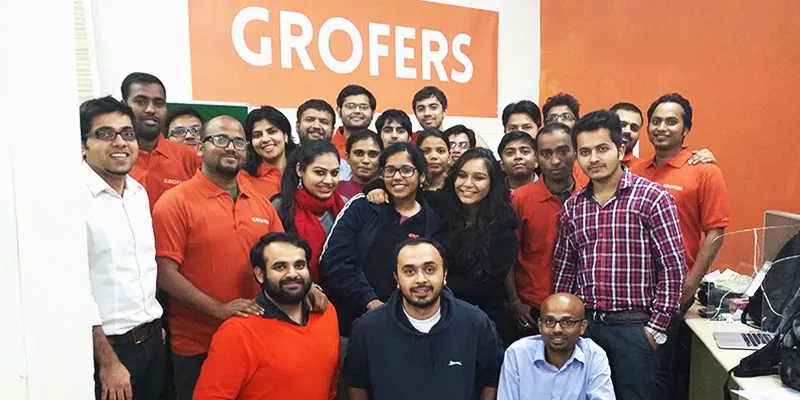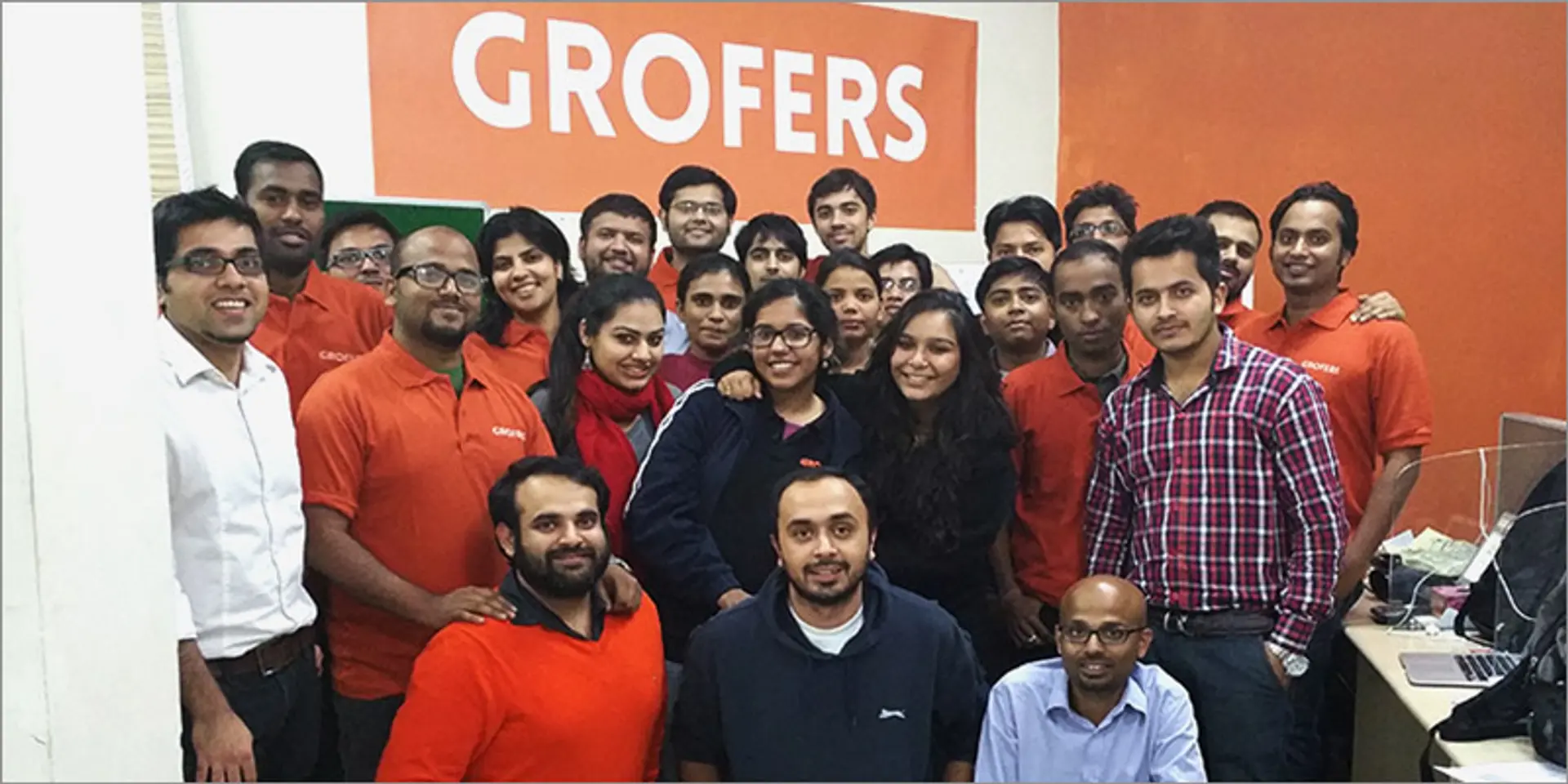From a shared workspace to raising $120 million recently, Grofers' growth story in 2015
Sometimes startups surprise you with the pace at which they grow, and it reflects once you enter their vicinity. At the beginning of this year when YourStory visited on-demand grocery and veggie startup Grofers, it was sharing workspace with another startup. However, the Gurgaon-based startup grew at a scorching rate and this could be sensed at its new base in Sector 32, Gurgaon.
According to Albinder Dhindsa, Co-founder, Grofers, since January, 2015, the company grew at scorching rate. He adds,
Our scale (number of orders) shoots up by 20 times in four months. We had to hire over 600 people in customer support in astretch of four months. Such hockey-stick scale curve was frustrating for us as our existing process was unable to handle it.
In August, Grofers was averaging 9,000 to 10,000 orders everyday when the volume stood at a mere 400to 500 ordersback in March. Currently, the company fulfills over 30,000 orders a day with an average transaction size of Rs 350.
Recent funding
Despite a slowdownin overall funding, Grofers managed to bag a massive $120-million round from Softbank Russian billionaire Yuri Milner and existing investors. “We got introduced to Softbank in July by our existing investors and the round closed in a couple of months,” says Albinder.
Why a massive $120-M round when Grofers was looking for $75 M?
During March-April, there was a clutch of VCs interested in a follow-on round for Grofers, but the company wasn’t in need of immediate capital. Albinder adds,
After July, we were looking to raise $70-75 million, but ended up with a $120-million round as our existing investors suggested us to close a big round.
Also, Softbank, that had invested in unicorns like Ola and Snapdeal, does not usually invest less than $100 million.

Inventory is crucial to meet fast growing demand
While a few experts believe that inventory-led on-demand grocery model is risky and doesn’t complement scalable business, Grofers recently started owning inventory in fruit and vegetable categories. “Fulfillment in fresh vegetables turned out to be a big challenge with surprising surge in volume. Our merchant base failed to meet demand consistently, hence we decided to source it on our own,” states Albinder.
Currently, Grofers has a vegetable plant in Azadpur Mandi (Delhi) and the company sources vegetablesand fruits from Safal and NABARD. “We have replaced our multiple stations model with one central stocking point in each city,” adds Albinder. The company has one such stocking unit in Dwarka (Delhi). As of now, Grofers doesn’t have a warehouse but plans to have it soon.
Adaptability is more important than belief in hyperlocal play
Coming back to the experts' belief about scalability of inventory-led play, Albinder adds,
Adaptability is more important than belief or proven logic in our business.
According to him, the challenges in scaling a hyperlocal startup change frequently. “Delay in delivery was a top concern in May while merchant on-boarding was in July. However, surprisingly, they aren’t in our top five priorities now,” he says. Currently, fulfillment is the biggest challenge for Grofers.
Hyperlocal has no comparison to US and China
While the Indian entrepreneurial ecosystem was busy drawing similarities between India and US till 2010, post-2011, China became an inspiration and source of seeking similarities. Albinder finds no similarities either to US or Chinese economies in hyperlocal segment. He explains,
India is a very different market and has nothing in common to US and China. Supply chain and overall market are efficient and organised in these two markets. Even in China,the hyperlocal space wasn’t about consumables while Grofers is being built on consumables. Our challenge is to standardise sellers but in China hyperlocal platforms just enable existing merchants with online and mobile platform.
At present, Grofers has over 7,000 merchants, distributors and independent seller base on its platform. The company plans to hit twomillion orders on a monthly basis by the end of July-August next year.







